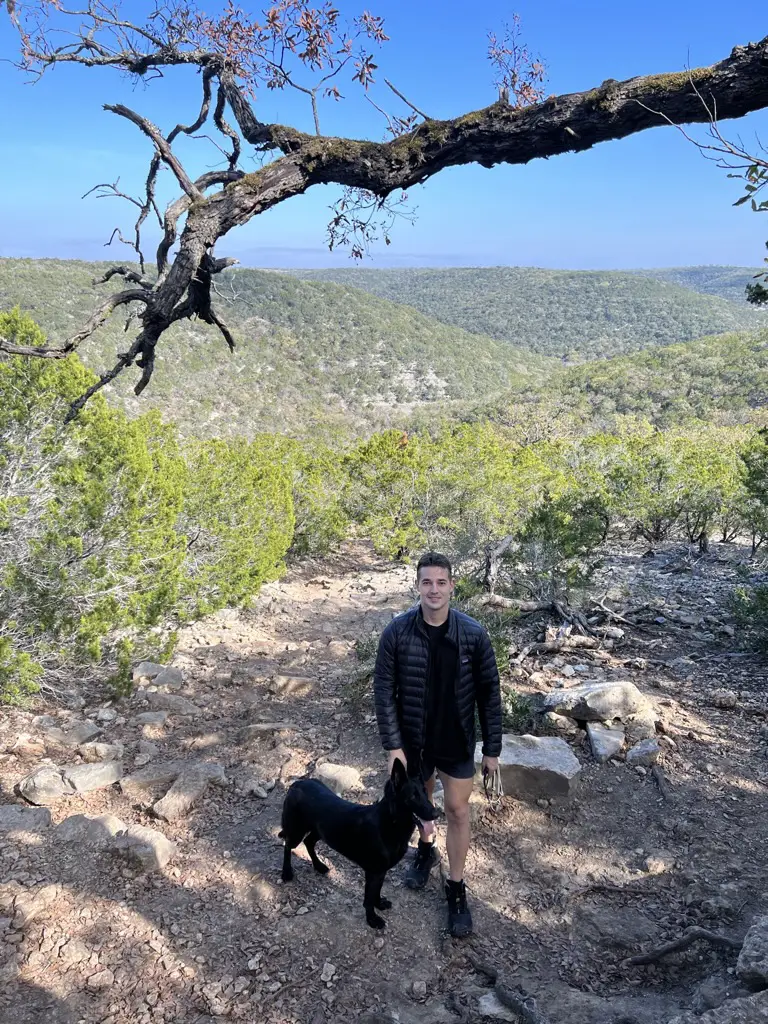We strive to provide you with authoritative, trustworthy, and expert advice. In doing so, the staff at texaswalkabout.com performs extensive research, editing, and fact checking to every post on this webiste. If you feel that this article can improve, please feel free to reach us at staff@texaswalkabout.com
Texas Bluebonnet, also known as Lupinus texensis or Texas lupine, has been long known as a symbol of Texan pride and was chosen as the state’s official flower in 1901.
However, the beauty of the bright blue pea-like flowers has attracted the attention of gardening enthusiasts beyond the borders of Texas.
But here’s the deal:
Can you grow the Texas bluebonnet in other states? Will it be able to survive?
How about growing it in a pot? Is this lovely plant considered a weed in some regions despite its beauty?
Keep reading to find the answers to these questions.
Can You Grow Texas Bluebonnets in a Pot?
The Texas bluebonnet is a wildflower that thrives in USDA zones 4 to 8, where it’s used in wildflower gardens and as an edging and border plant.
But you can also grow it in pots and containers, where these vibrant blue beauties can add charm wherever you choose to keep them.
Texas lupines thrive as indoor potted plants, provided that you maintain the optimal growing conditions.
As a matter of fact, Texas lupines, or buffalo clover plants, grow as annuals, so they won’t outgrow their container. As a result, repotting won’t be necessary.
So, how can you grow them in pots successfully? Here are the proper steps to follow.
Choose the Right Pot
Texas bluebonnets have rather deep roots, so you need to grow them in three to five-gallon containers. A large and deep pot allows for healthy root growth and ensures that this plant won’t be subject to root rot.
Pick the Right Soil
The buffalo clover plant thrives in different soil types as long as they have good draining. So, you can grow this vivid wildflower in sandy, loamy, or chalky soil.
Texas bluebonnets aren’t picky about the soil’s pH level but thrive in slightly alkaline soils.
If you’re using a potting mix to grow these plants, you should pick a well-draining potting mix that dries fast.
You can add lime, ash, baking soda, or crushed oyster shells to the potting mix to boost the growth of your Texas bluebonnets by increasing the pH level.
Provide Adequate Light
Texas bluebonnets thrive in full sun. As a result, if you want to grow this wildflower in a container, you should ensure it receives at least six to eight hours of bright, direct sunlight.
Selecting the best location for your Texas bluebonnets is a must.
This will be an excellent container plant to grow on your patio or in a container garden, provided that taller bushes and trees do not shade it.
If you choose to grow Texas bluebonnets indoors, ensure they’re placed next to a west or south-facing window. Remove the curtains and move your container closer to the window if you feel that it isn’t growing properly.
Water Properly
Adequate watering is crucial for Texas lupines’ growth. These plants require regular watering after sowing the seeds.
Yet, after that, they become drought-tolerant.
Allowing the soil to dry out between waterings is crucial because overwatering is a common issue with growing Texas bluebonnets.
If your plant is wilting, cut down watering and keep the plant in bright light. You might have to replace the pot, ensuring your container has more drainage holes.
Maintain Adequate Temperatures and Humidity Levels
Maintaining warm temperatures is crucial to promote the germination of Texas bluebonnet seeds. As a result, these plants thrive in the Southern United States, where the weather stays warm, even in winter.
Cold winters can inhibit the growth of a healthy root system. So, if you grow an indoor Texas bluebonnet in a cold climate, consider overwintering these wildflowers.
Too much moisture and humidity aren’t good for these plants. But you should keep them away from cold and hot drafts.
Will Texas Bluebonnets Grow in Florida?
Texas bluebonnets can grow in Florida with some adjustment in their care routine.
Many gardening enthusiasts wonder if these flowers can thrive outside Texas. And Florida seems like a good choice since both states are known to have hot summers.
Nevertheless, Florida has a subtropical climate, characterized by its hot and humid summers and mild winters, whereas Texan summers are often hotter and drier.
These wildflowers thrive in arid environments, which explains why they’re popular in xeriscape landscaping. As a result, you can grow them in the humid climate of Florida with some considerations.
- Sow the Texas bluebonnet seeds in late fall or early winter. This will allow the roots to get established before the humid summer, but waiting too much means that your plants might not have a chance to bloom.
- If you live in a colder region, planting Texas bluebonnets outside might not be possible because these plants won’t survive when the temperature falls below 50 degrees Fahrenheit.
- The most common soil types in Florida are fine sand, loamy, and sandy soil. Add organic matter to improve water retention if the soil drains too well.
- Florida is known for its bright sunlight, but you might need to place your Texas lupines where they get sheltered from the harsh afternoon sun.
- Overwatering can be a real issue in Florida because of the higher chance of rainfall and humid summers. So, you should allow the soil to dry out and keep the plants in the sun.
- Your plants might be prone to fungal diseases triggered by the high humidity. Good air circulation and keeping the plants where they can receive direct sunlight will protect them from infections.
Will Texas Bluebonnets Grow in California?
You can grow Texas bluebonnets in California, depending on the region.
The climate in Califonia differs significantly from one location to another. So, you can have a mild Mediterranean climate along the coastal areas, where the summers are dry, and the winters are wet and slightly cold.
In inland California, the summers can be sweltering and arid. So, your Texas bluebonnets will have a higher chance of survival.
As a result, it’s better to grow buffalo clovers in inland California, as these plants might be susceptible to fungal diseases in moist and humid weather.
Moreover, the clay soil in coastal areas won’t help these plants get established.
Luckily, the warm climate of California can help these plants grow in containers. You can grow them in pots by following these tips.
- Ensure you’re growing these plants in large pots with enough drainage holes.
- In humid weather, avoid overwatering the Texas bluebonnet plants.
- Adding some compost or perlite will help improve drainage.
- Regular pruning will encourage blooming and prevent seed formation.
Can Texas Bluebonnets Grow in Tennessee?
Texas bluebonnets can grow in Tennessee, but Tennesee’s mild and termprant weather might not always work for these drought-tolerant wildflowers.
Here are some tips to grow your buffalo clovers in the Volunteer State.
- Sowing the seeds in the early fall, in September and October, will allow the roots to get established before winter.
- Clay soil is abundant in Tennessee, so you need to improve drainage by adding well-rotted manure and compost.
- The weather is mostly sunny in Tennessee, but there’s also a high chance of rainfall and overcast days. As a result, you should ensure that your plants receive between six to eight hours of direct sunlight.
- Due to the state’s humid climate, you must be careful with your watering schedule, as too much moisture will make your Texas bluebonnets prone to diseases.
Is Texas Bluebonnet a Weed?
In general, Texas bluebonnets aren’t considered weeds or invasive species.
These plants are considered part of Texan natural beauty and cultural heritage. As a result, they’re widely grown in native and wildflower gardens as they contribute to local biodiversity and support local pollinators.
By definition, invasive plants or weeds obstruct the growth of local species by competing with them for nutrients.
So, Texas bluebonnets can be considered invasive and treated as weeds when grown out of their range.
For example, they might be considered weeds or invasive species in different parts of California, where the climate provides these plants with their preferred and ideal growing conditions.
In this case, the non-native Texas bluebonnets can be a nuisance and disrupt the growth of local varieties.
If Texas bluebonnets have been getting out of control in your garden, you can follow these tips to prevent their spread.
- Deadhead the spent flowers to prevent the formation of seed pots.
- Ask gardening experts at a local nursery about the native alternatives to grow in your garden.
- Avoid overfertilizing your Texas bluebonnets.
- Prune the plant later in the season after it’s done blooming. Plants that are pruned too early might have the ability to resprout.
- Regular mowing can disrupt the root system and prevent younger plants from getting established.
- Digging out the root system might be necessary, especially if you have established plants.
Wrap Up
Texas bluebonnets are bright and vivid wildflowers that thrive in the hot and arid climate of Texas. These plants are more adaptable than one might think, as they can thrive in pots on your patio, in the warm weather of Florida, the sunny climate of California, and the temperate weather of Tennessee.
The most important thing is to provide these plants with enough sunlight, as they’re sun-worshippers. They also thrive in well-draining soil and are drought-tolerant once established.
Overwatering is one of the main issues these plants will deal with. As a result, paying attention to their watering schedule is a must, especially if they’re growing in a humid or moist climate.
These beautiful flowers can grow in various conditions and settings as long as you pay attention to their needs. Texas lupines might be considered invasive outside their natural habitat, especially if they’re left unmanaged and uncontrolled.

Robert is a native Texan writer for TexasWalkabout, passionate about Texas culture and food, wearing cowboy boots daily. He interviews local pitmasters and chefs, tastes and reviews innovative dishes, and explores hidden gems and iconic landmarks. Graduating magna cum laude in Cyber Security from the University of Texas at San Antonio, Robert excels academically and professionally while also being knowledgeable in Texas history and culture. After living in Texas for over 28 years, he provides first-hand and trustworthy information for all your Texas needs!
